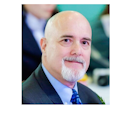"It's the economy, stupid" was Bill Clinton's mantra in the 1992 presidential campaign. Today, news about the economy is everywhere — and it's mostly bad. As much as I feel the need to "cheerlead" and put a positive spin on green cleaning, I also think it is important to be pragmatic.
Many schools and universities are experiencing economic hardships because of the economy. Tough decisions must be made. If we have learned anything from history, it is that construction, facility, maintenance, transportation and other operational issues are likely to take a back seat to staffing and issues considered key to the educational mission. Although a case can be made that healthful buildings are "key" to educating kids, green cleaning often is secondary to simply paying teachers and staff.
Still, schools and universities should try to maintain the momentum on their green and sustainability initiatives. America will emerge from this recession, and green and sustainability shouldn't be abandoned during this period of belt-tightening.
Abandoning or delaying green initiatives inadvertently blames "green" as the cause for economic problems. Rather, the discussion should be defined as one that differentiates projects that are capital-intensive from those that require little, if any, upfront investment.
In difficult economic times, green-cleaning programs can continue or even expand. Compared with other opportunities that require significant upfront investment capital (e.g. solar panels, green roofs, adding insulation, replacing the HVAC system, etc.), green cleaning can be "cost neutral."
For those who have not yet established a green-cleaning program, this is an ideal time to begin. Many local janitorial supply distributors will conduct an audit to identify available options and opportunities.
Many green-cleaning opportunities exist, such as converting to green chemicals, replacing ready-to-use and aerosol cleaning products with green concentrates diluted on-site through chemical-management systems, and replacing virgin paper products in multi-fold towel dispensers with recycled products on large rolls dispensed from touch-free dispensers. The best part is that these opportunities often can save money.
For those who already have started the green-cleaning journey, additional opportunities can be found at little additional cost. Traditional products can be replaced with green alternatives within existing budget parameters.
One overlooked opportunity is letting your community know about your green-cleaning program. Many distributors can help with articles, newsletters and more, which are a good way to create "value" at little cost, and to keep people aware of green and sustainability issues until the economy allows for those projects that require greater capital investment.
Stephen Ashkin is executive director of the Green Cleaning Network, a 501(c)3 not-for-profit educational organization. He can be reached at [email protected].
About the Author

Stephen Ashkin
Executive Director
Ashkin operates the Green Cleaning Network, a 501(c)3 not-for-profit educational organization.